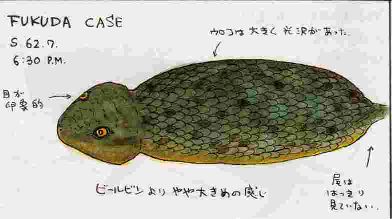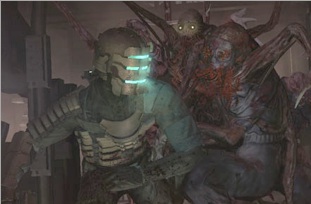 Sony’s Playstation Portable is not a bad machine. Though the screen can blur a bit it otherwise looks very nice, and the UI for the main system is well done. I’m not a huge fan of the analog nub but it’s not a deal breaker for me, and while the battery life may be pretty bad it’s not so terrible that the device itself is made useless. While there are legitimate problems, the issues are all fairly minor; as a whole, the PSP is a pretty good handheld gaming device.
Sony’s Playstation Portable is not a bad machine. Though the screen can blur a bit it otherwise looks very nice, and the UI for the main system is well done. I’m not a huge fan of the analog nub but it’s not a deal breaker for me, and while the battery life may be pretty bad it’s not so terrible that the device itself is made useless. While there are legitimate problems, the issues are all fairly minor; as a whole, the PSP is a pretty good handheld gaming device.
And yet, the system has failed to excite customers. There are extremely few really good games for the platform, and while every once and a while something new and good comes out, often PSP owners are left with scaled-down versions of last year’s PS2 games. Plus, for all of the processing power, despite the beautiful display, and even though the PSP is a sleek bit of electronics, it’s losing to the not-so-sleek, not-so-powerful, inferior-screened Nintendo DS.
So what’s the problem with the PSP? Why hasn’t it done better in the marketplace? Here’s my theory.
I worked (briefly) on a PSP launch title. In connection with that title I met a number of folks from Sony America who communicated to my company what they had envisioned for the PSP. They wanted to sell it as a handheld PS2, and they wanted PS2-quality games on the PSP. They didn’t want the same games that were already available on PS2, they said, but they expected developers to be able to port existing PS2 tech to the PSP in order to make new games. This was a fine theory, but when the platform came out it was buried under a huge number of straight ports and knock-off games (one or two of which I worked on myself). For all of Sony’s intentions, the platform quickly became a place to deposit a major franchise port in-between PS2 releases. Even now, three years after the platform was released, there are no games for it that score 90% or greater in aggregate. And the top two games for the platform, Lumines and Wipeout, were launch titles.
Here’s where I think Sony screwed up. By marketing the machine as a handheld PS2, they raised the bar significantly for developers. By raising that bar they also raised cost of development; I remember that the first PSP games I worked on ended up costing three times what they were initially expected to cost when the platform was announced. Writing a high-quality PSP game isn’t all that much cheaper than making a PS2 game, mostly because the level of expectation for the platform was inflated by Sony early on.
This level of hype might have been OK, but then Sony went and priced the system at $250, which is way too expensive for most consumers. As a result the installed base for the PSP has grown incredibly slowly compared to other platforms.
So you have a platform that not very many people bought that costs a lot to develop for. The result is of course ports: they are the only way that a developer could deliver a title with strong graphics without assuming too much risk. And on top of that, the PSP is not a handheld PS2–it’s considerably slower than the PS2, and it also has less RAM than its big brother (Sony reserves 8 of the PSP’s 32 MB of RAM for the PSP OS). So it doesn’t make a whole lot of sense for developers to go making new games specifically for the PSP; the size of the audience can’t sustain the cost of development.
Now, over the last three years the size of the PSP installed base has grown, and as it increases we’ve seen a small trickle of original games on the platform. If the platform continues to sell it might become commercially viable sometime in the next couple of years. But it’s already too late, really; instead of making a PSP game, a developer can make a DS game for less money and sell it to a much, much larger audience. While I think the PSP still has some life left in it, it’s already missed its prime and is on the down swing.
The reason that I’m spending all this time talking about the PSP is that I think it’s a pretty good example of what has happened to the PS3 so far. The PS3 is too expensive, and therefore the installed base is too small, and yet developing competitive games for it is incredibly expensive. The PS3 still has a lot more life in it than its handheld sibling, and if they can get the cost down and secure some very good games the platform may still have a chance. But at the moment it’s looking increasingly similar to the PSP story: too expensive to develop for given the size of the audience, which itself cannot grow because the device is too expensive. For the second time in a row, I think that Sony has been so interested in shipping fancy hardware that they’ve missed the balance between price point and performance expectation.
Why should you care about all of this? Well, the short answer is Japan. Of the games listed on this site, more than 60% of them originated in the Land of the Rising Sun. The thing about Japan is, they don’t want Xboxes. Barring some miracle marketing by Microsoft, the fight in Japan is between the PS3 and the Wii. And just like everywhere else, the Wii is winning big time. If the PS3 ends up losing enough market share (or even if its market share remains constant in the face of Wii growth), Japanese developers will likely abandon the platform. It’s already happening to some extent, but it remains to be seen if the Wii boom will sustain itself or if the Sony brand can pull itself out of its slump. If I were a betting man considering the best way to play horror games in the next three or four years, I’d probably make damn sure I had a Wii in the house.

 It’s been a while since the last Creature Feature, so I think it’s high time for a new one. This time around the creature in question is the tsuchinoko, a mythical snake from Japan. Unlike previous Creature Feature entries, the tsuchinoko is hardly a monster or supernatural entity; though some versions of the story suggest that they enjoy drinking and are capable of speech (but should not be trusted), most accounts paint the tsuchinoko as just an extremely rare species of snake.
It’s been a while since the last Creature Feature, so I think it’s high time for a new one. This time around the creature in question is the tsuchinoko, a mythical snake from Japan. Unlike previous Creature Feature entries, the tsuchinoko is hardly a monster or supernatural entity; though some versions of the story suggest that they enjoy drinking and are capable of speech (but should not be trusted), most accounts paint the tsuchinoko as just an extremely rare species of snake.


 I finished
I finished 